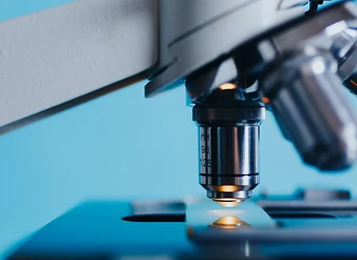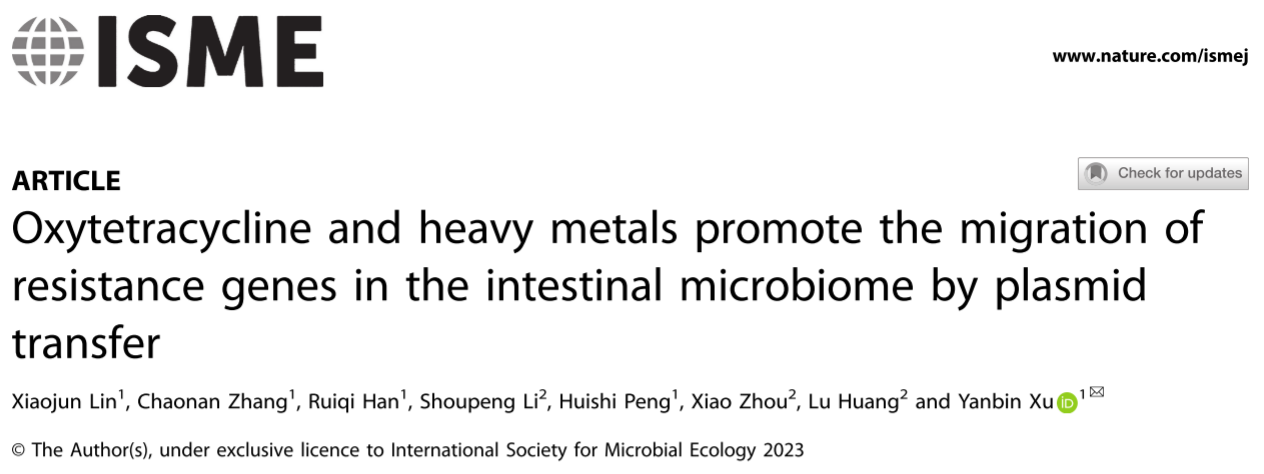

- Application Article
- Download
Hooke College

- About Us
- Team
- R & D and production
- Join Us
- Contact Us
- Qualification honor



On September 12, 2023, Professor Xu Yanbin's team from Guangdong University of Technology published a paper titled "Oxygen tetracycline and heavy metals promote the migration of resistance genes in the internal microbiome by plasma transfer" in the Nature sub journal and the top environmental journal "The ISME Journal". The first author of the article is Dr. Lin Xiaojun. This study used the gut microbiota of Xenopus to determine the effects of heavy metals and antibiotic oxytetracycline on the horizontal transfer of resistance genes in plasmid vectors in gut microbiota. The core products of Changguang Chenying - P300 and PRECI SCS-F visualized fluorescence single-cell sorting instrument, have provided powerful tools for the identification and isolation verification of non cultivable conjugated bacteria in the horizontal transfer conjugation system in this study.

Horizontal gene transfer (HGT) has been considered the most important pathway to introduce antibiotic resistance genes (ARGs), which seriously threatens human health and biological security. The presence of ARGs in the aquatic environment and their effect on the intestinal micro-ecosystem of aquatic animals can occur easily. To investigate the HGT potential and rule of exogenous ARGs in the intestinal flora, a visual conjugative model was developed, including the donor of dual-fluorescent bacterium and the recipient of Xenopus tropicalis intestinal microbiome. Some common pollutants of oxytetracycline (OTC) and three heavy metals (Zn, Cu and Pb) were selected as the stressor. The multi-techniques of flow cytometry (FCM), scanning electron microscopy (SEM), atomic force microscopy (AFM), single-cell Raman spectroscopy with sorting (SCRSS) and indicator analysis were used in this study. The results showed that ARG transfer could occur more easily under stressors. Moreover, the conjugation efficiency mainly depended on the viability of the intestinal bacteria. The mechanisms of OTC and heavy metal stressing conjugation included the upregulation of ompC, traJ, traG and the downregulation of korA gene. Moreover, the enzymatic activities of SOD, CAT, GSH-PX increased and the bacterial surface appearance also changed. The predominant recipient was identified as Citrobacter freundi by SCRSS, in which the abundance and quantity of ARG after conjugation were higher than those before. Therefore, since the diversity of potential recipients in the intestine are very high, the migration of invasive ARGs in the microbiome should be given more attention to prevent its potential risks to public health.
The paper links:

+86-431-81077008
+86-571-86972756

Building 3, Photoelectric Information Industrial Park, No.7691 Ziyou Road, Changchun, Jilin, P.R.C
F2006, 2nd Floor,South Building, No. 368 Liuhe Road, Binjiang District, Hangzhou, Zhejiang,P.R.C

sales@hooke-instruments.com

COPYRIGHT©2022 HOOKE INSTRUMENTS LTD.ALL RIGHTS RESERVED 吉ICP备18001354号-1